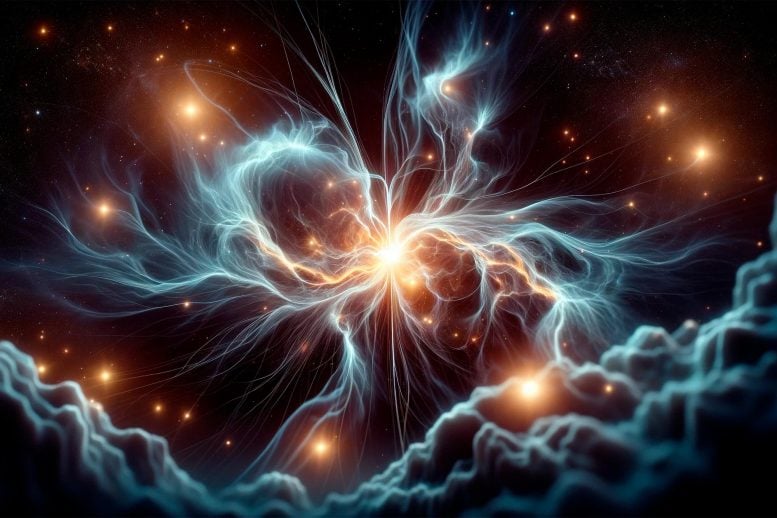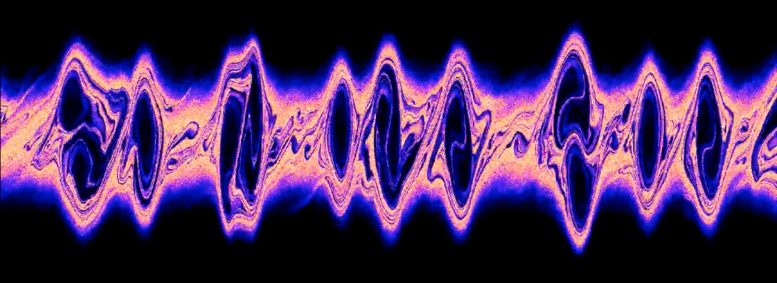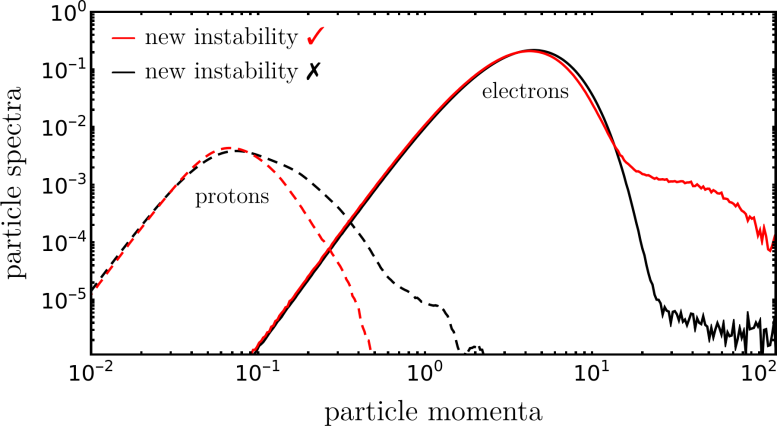
Scientists have discovered a new state of plasma instability, revolutionizing our understanding of cosmic rays. This breakthrough reveals that cosmic rays generate electromagnetic waves in the plasma, affecting its paths. This collective behavior of cosmic rays, similar to waves formed by water molecules, challenges previous theories and promises to provide insight into the transport of cosmic rays in galaxies and their role in galaxy evolution. Credit: SciTechDaily.com
Scientists from the Leibniz Institute for Astrophysics Potsdam (AIP) have discovered a new object plasma This instability is set to revolutionize our understanding of the origin of cosmic rays and their dynamical influence on galaxies.
At the beginning of the last century, Victor Hess discovered a new phenomenon called cosmic rays, which later earned him a Nobel Prize. He performed high-altitude balloon flights to find that the Earth’s atmosphere was not ionized due to Earth’s radioactivity. Instead, he confirmed that the origin of ionization was extraterrestrial. Later, it was determined that cosmic “rays” consist of charged particles from outer space traveling at close to the speed of light rather than… radiation. However, the name “cosmic rays” stuck after these results.
Recent developments in cosmic ray research
In the new study, Dr. Mohamed Shalabi, a scientist at the AIP Institute and lead author of this study, and his collaborators ran numerical simulations to track the paths of several cosmic ray particles and study how they interact with the surrounding plasma made up of electrons and protons.

Simulation of cosmic rays counter-flowing onto a plasma background and triggering plasma instability. Shown here is the distribution of background particles responding to cosmic rays flowing in phase space, which spans particle position (horizontal axis) and velocity (vertical axis). Color perception of number densities and phase space apertures are manifestations of the highly dynamic nature of instability that dissipates in random motions. Image source: Shalabi/AIP
When the researchers studied cosmic rays traveling from one side of the simulation to the other, they discovered a new phenomenon that excites electromagnetic waves in the background plasma. These waves exert a force on cosmic rays, changing their winding paths.
Understanding cosmic rays as collective phenomena
Most importantly, this new phenomenon can be better understood if we consider that cosmic rays do not act as individual particles, but rather support a collective electromagnetic wave. When this wave interacts with fundamental background waves, it is strongly amplified and energy transfer occurs.
“This view allows us to consider cosmic rays as behaving like radiation and not as individual particles in this context, just as Viktor Hess originally thought,” says Professor Christoph Pfromer, Head of the Department of High-Energy Cosmology and Astrophysics at AIP. .

Momentum distribution of protons (dashed lines) and electrons (solid lines). Shown here is the appearance of a tail of high-energy electrons at a slower moving shock. This is a result of interactions with electromagnetic waves generated by the newly discovered plasma instabilities (red), which are absent in the case of the faster shock (black). Since only high-energy electrons produce observable radio emission, this highlights the importance of understanding the physics of the acceleration process. Image source: Shalabi/AIP
A good analogy for this behavior is that individual water molecules collectively form a wave that breaks at the shore. “This progress has only been achieved by considering previously overlooked smaller scales that call into question the use of effective hydrodynamic theories when studying plasma processes,” explains Dr. Mohamed Shalabi.
Effects and applications
There are many applications for the newly discovered plasma instabilities, including the first explanation of how electrons from interstellar thermal plasma are accelerated to high energies in supernova remnants.
“The newly discovered plasma instability represents a major leap in our understanding of the acceleration process and finally explains why supernova remnants shine in radio and gamma rays,” says Mohamed Shalabi.
Moreover, this pioneering discovery opens the door to a deeper understanding of the fundamental processes of cosmic ray transmission in galaxies, which represents the greatest mystery in our understanding of the processes that shape galaxies during their cosmic evolution.
References:
“Deciphering the physical basis of mesoscale instability” by Mohamed Shalabi, Timon Thomas, Christoph Pfromer, Reuven Lemmers, and Virginia Breschi, December 12, 2023, Journal of Plasma Physics.
doi: 10.1017/S0022377823001289
“Effective electron acceleration mechanism at parallel non-relativistic shocks” by Mohamed Shalabi, Reuven Lemmers, Timon Thomas, Christoph Pfromer, May 4, 2022, Astrophysics > High energy astrophysical phenomena.
arXiv:2202.05288
“A new instability caused by cosmic rays” by Mohamed Shalabi, Timon Thomas and Christoph Pfromer, February 24, 2021, the Astrophysical Journal.
doi: 10.3847/1538-4357/abd02d

“Beer aficionado. Gamer. Alcohol fanatic. Evil food trailblazer. Avid bacon maven.”
